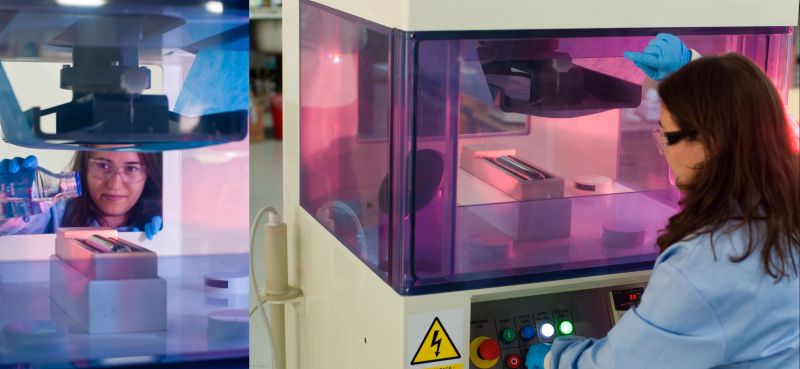Solution Processing
Nanospider™
Needle-free electrospinning technology
Nanospider™ technology is a patented, needle-free high voltage and free liquid surface electrospinning process. The technology is based upon the discovery, that it is possible to create Taylor Cones and the subsequent flow of material not only from the tip of a capillary, but also from a thin film of a polymer solution.
Nanospider™ technology allows the production of nanofibers from polymers solved in water, acids or bipolar solvents as well as from melted polymers and is suitable for the production of organic and inorganic fibres. This versatile technology is easily adapted to a variety of process parameters for the optimization of the specific properties of the produced nanofibers.
Nanospider™ technology uses simply shaped electrodes, has no parts easily clogged (in comparison to needle-type electrospinning) and is generally mechanically simple.
The numbers of fibres per machine width is given by the distance of the Taylor cones. Nanospider™ free liquid surface electrospinning lets natural physics define this distance, rather than using individual needles. This allows higher fibre packing density and thus an increased productivity as well as better fibre homogeneity and more consistent web morphology.
NANOSPIDER™ technology provides high productivity, scalability, high fibre diameter, web uniformity, economical operation, easy maintenance and flexibility in used polymers and substrates.
Features:
- Mean fibre diameter: 50, 100, 150, 200, 250 nm or higher
- Linear mass density: <0.0001 denier or dtexa
- Web area weight: 0.03 g/m2 is the lowest commonly used industrial application. 50 g/m2 has been the highest used.
- Web thickness: 1-500 micrometer
- Production speed: up to 60m/min for production line
- Production width: currently up to 1.6m
For more information visit: http://www.elmarco.com/
Fiberlab -1000, melt and solution eletrospinning machine, for the development of nanofibres is also accessible. For more information visit: http://fiberiotech.com


